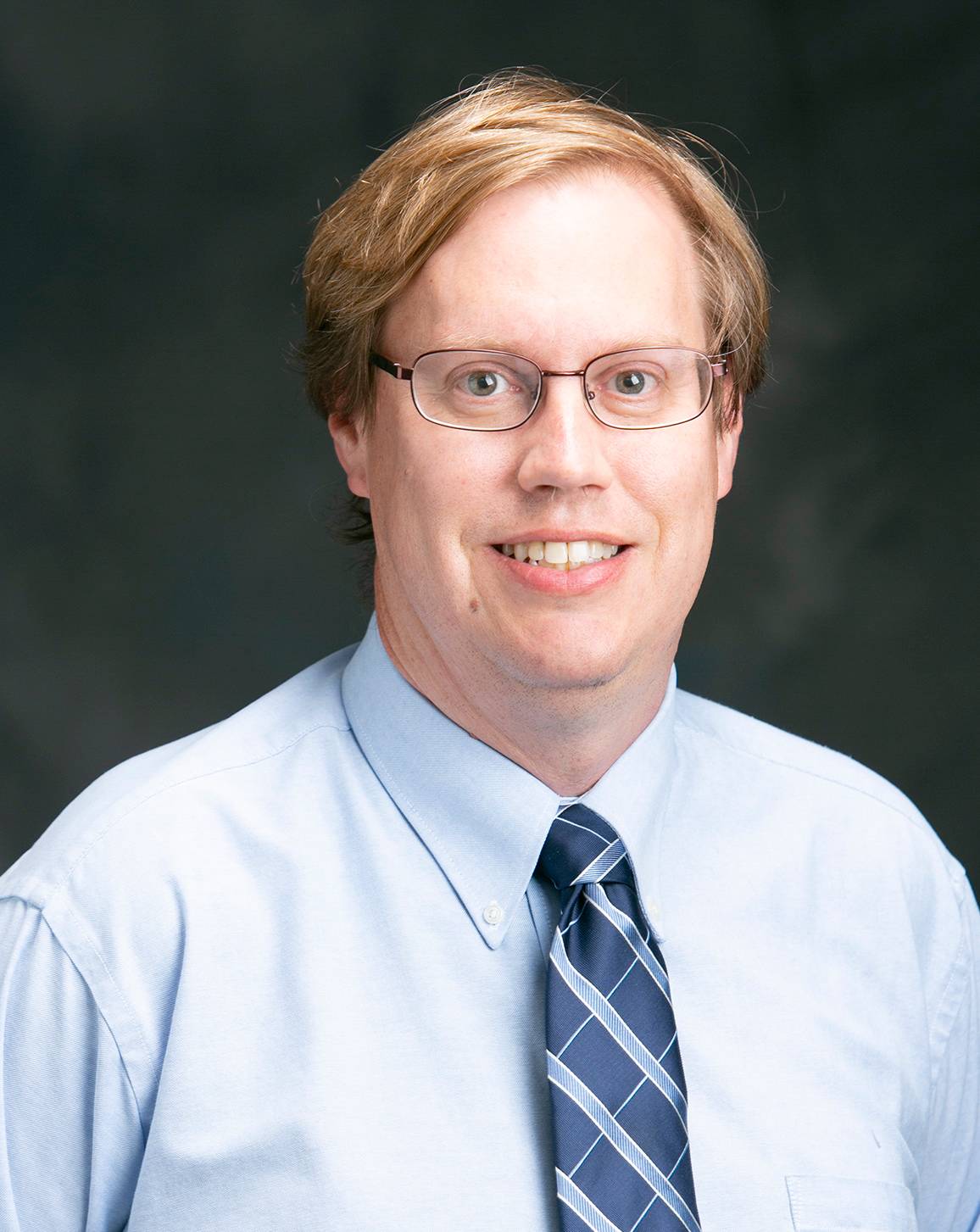Texas State professor utilizes math models to make inroads against COVID-19
Brian Hudgins | August 12, 2020

Taking on COVID-19 has entailed a 3-prong approach from Alex White, a professor of mathematics education and the assistant chair of the Mathematics Department at Texas State University.
White has teamed up with both Mathworks, a center for innovation in mathematics at Texas State, and Lauren Ancel Meyers, a professor of integrative biology at the University of Texas at Austin, to put some new math models to work. A research group headed by Meyers has been using those models for several years to predict the spread of diseases. Meyers’ mathematical models utilize graph theory to model how disease spreads through a contact network, data from public health officials in the U.S. and Canada and computer simulations to design optimal control measures of diseases.
One aim is to determine: Who should receive vaccines when the supplies of the vaccine are insufficient? Which mitigation strategies are the most effective? The overall project is designed to study how the models are developed. Simulations are used to determine optimal control measures.
COVID-19 has thrown a batch of new elements into the equations.
“A lot of the techniques we have still apply for COVID, but specific parameters we include were uncertain due to uncertainty in the testing,” White said. “The data gets better over time.”
An even more difficult component of countering COVID – the differences in the way the virus presents itself compared to other diseases. Typically, an infected person is going to display symptoms before a person they transmits a virus to. However, COVID-19 requires a different analysis.
“Your thoughts about how a disease should behave and the parameters you put on it don’t apply,” White said. “The time gap between the infector and infectee showing symptoms is usually positive. In this disease, a percentage of that is negative. Even though Person X infects Person Y, X might show symptoms after Y.”
This revelation is one of the puzzles posed by COVID-19.
“You typically have a signal with other diseases that a person might have the disease,” White said. “Here, the signal is not always present.”
One benefit of the challenging questions posed by COVID-19: students have received ample opportunities to contribute to the discussions. High school students who attended the Honors Summer Math Camp at Texas State worked on two projects. The first project involved looking at and understanding the relationship among counties throughout Texas regarding the rate of spread in urban and rural counties.
“The initial spread was focused mostly on urban areas, but there has been spread to rural areas,” White said.
The second project involved analyzing data from a second outbreak in China. A response in February in March may have knocked the disease down, but how did hard cell phone data registering mobility relate to a second outbreak?
Students in the HSMC, who come from eight different high schools, also were able to participate in 30-muinute Zoom meetings. That afforded them the chance to hear from modelers with the Columbia School of Medicine, Northwestern University, UCLA and modelers from South Africa and England.
“They are top researchers in the modeling field,” White said. “They are the people the Centers for Disease Control and Prevention reach out to.”
The group efforts by the HSMC participants and their ability to hear from modelers throughout the world provided many benefits to White.
“These students are extremely hard working and academically oriented,” White said. “They ask excellent questions and make me as a researcher think more deeply about questions. It helps me to hear their different perspectives and how these problems affect them. It’s a pleasure to work with those students – you give them a problem and they come back with ideas.”
A personal motivation for the high school students to jump in and assist revolves around the modelers looking at the impact of opening schools or not opening. “We got to hear from students in Texas, Pennsylvania and California,” White said.
Within that U.S. effort, there is the collaboration between White, his peers in Texas State's mathematics department and Meyers’ crew at UT-Austin. “The research I have been doing with students (at Texas State) is funded internally, but we are also taking advantage of the resources Dr. Meyers has.”
Share this article
For more information, contact University Communications:Jayme Blaschke, 512-245-2555 Sandy Pantlik, 512-245-2922 |